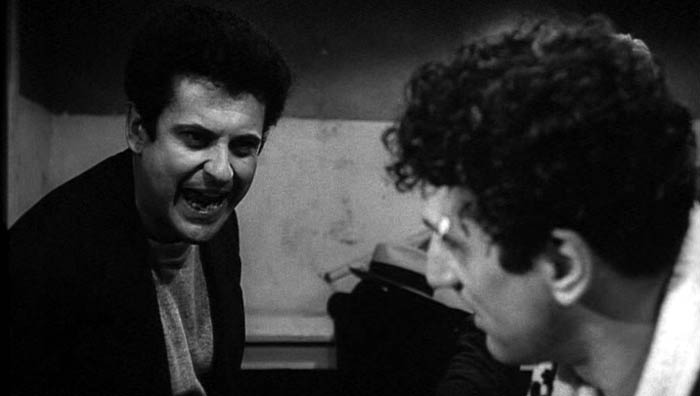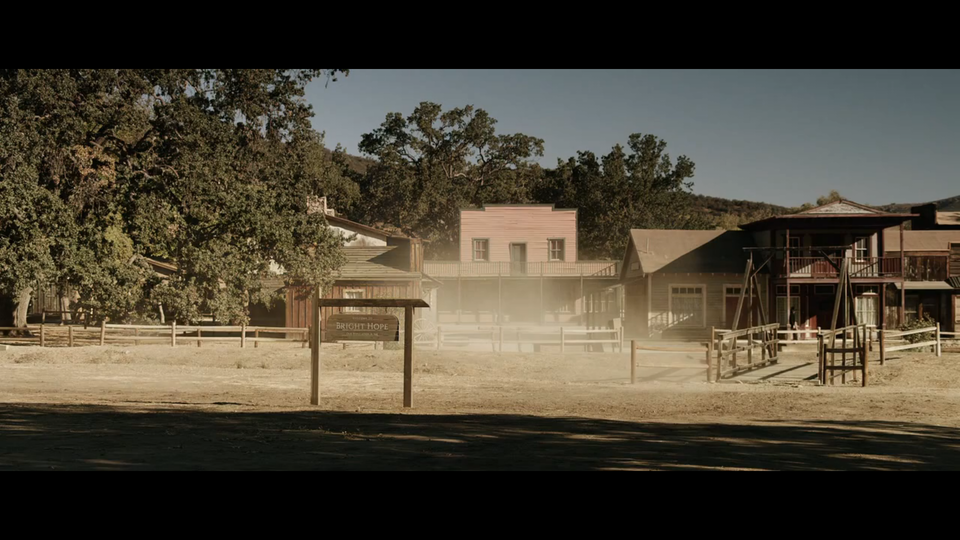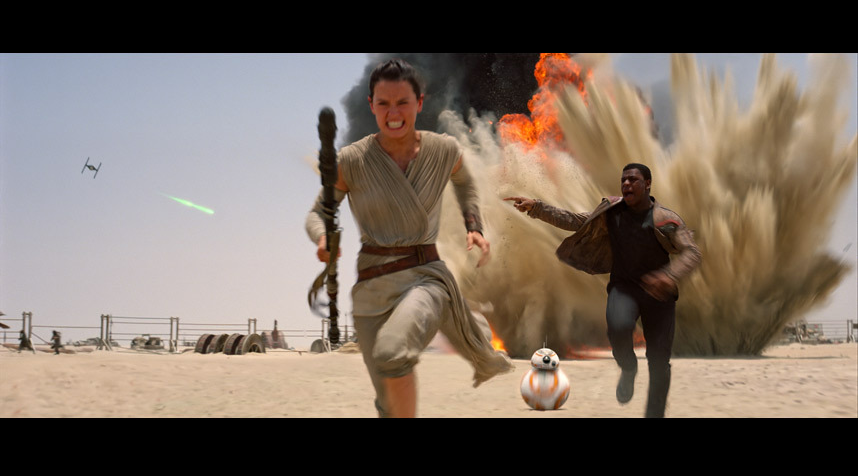—
The Tin Drum (1979) + Pan's Labyrinth (2006)

Magical Realism: Exploring Reality and Agency in the Coming-of-Age Story
Adapted from an essay written in 2015.
As young inhabitants of the society that they live in, the main subjects of a coming-of-age story are often powerless to affect the world around them at any meaningful scale. They form their own social cliques and standards at a local scale with other adolescents, but must always grow older and face the inevitable coming of change, the structures of adult society, and the responsibilities they take on as members within it. The transition from youth to adulthood often comes with the acceptance of societal expectations and realities, and, as many films have explored, the dilution, repression, or outright abandonment of creativity, imagination, and “childish” optimism in the face of personal or political events and tribulations.
Many films have explored the traditional coming-of-age story, covering everything from high-school and college relations (The Breakfast Club [1985], The Sandlot [1993], Can’t Hardly Wait [1998], An Education [2009]), parental relations (Stand by Me [1986], Short Term 12 [2013]), sexual identity (Get Real [1998], Blue is the Warmest Color [2013]), and political and philosophical ideologies. They span every genre of film, including comedy, horror, musical, fantasy, science fiction, and documentary. The crux of such narratives often rely heavily on the protagonist’s psychological and moral growth, examining how the unrelenting passage of time in the temporal and spatial setting affects and manipulates the personal growth of its inhabitants and their philosophical developments.
Although the ubiquitous experience of growing older enables artists to adhere to safe story structures, relatable themes of personal growth and acceptance, and clear narrative guidelines, there are films that opt to take the experience of transitioning into adulthood and give it an alternative representation. The following seeks to illuminate the inner workings of two films in particular — The Tin Drum (1979) and Pan’s Labyrinth (2006) — in order to appreciate the visual and audial artistry of magical realist elements as applied within their respective settings, and to examine the roots of subjective agency and its effects on adolescence during pivotal transitional periods from youth to adulthood.
Though explored briefly as an alternative to German expressionist artwork in the 1920’s, magical realism as a novelistic and cinematic genre has its emergent roots in Latin-American and Hispanic fiction, with the critic Angel Flores identifying Jorge Luis Borges as the first magical realist writer in his 1955 essay, “Magical Realism in Spanish American Fiction.” The extent to which the variety of magical realist characteristics apply to a given magic realist text or film varies from one work to another, but all works succeed in achieving the overarching desired portrayal of common reality in the context of an existing, magical realist world.
The style is closely related to surrealism, with a focus on the material object and the actual existence of fantastical elements in the real world, as opposed to surrealism’s more psychological and subconscious representation of reality. The essence of magical realism, as observed in this analysis, is that of “fantasy with a straight face,” portraying a world that is, at its core, neither fundamentally different from the reality that we live in, as in true fantasy works, nor internally-expressed and tainted by the point of view of the protagonist, as in surrealist works.
The transition from literature to video media and film introduces a challenge for magical realism. Unlike fantasy or surrealist works, magical realism is adamantly against escapism — the retreat of the viewer into a world wholly different from their own. In film, there is a fundamental realism that is difficult to convey accurately with a touch of fantasy without becoming a full-blown, world-building fantasy. The difficulty of expressing a world that is convincingly familiar and natural, while at the same time introducing believable pockets of magic, is increased dramatically by the addition of sight and sound, and the balance between the commonplace and fantastical relies heavily on the interplay between visuals, audio cues, and the portrayal of subjectivity.
The Poetics of Magical Realism: Visual Duality
The visual landscapes of The Tin Drum and Pan’s Labyrinth are striking in their representations of magical and surreal elements, and are often ripe with symbolic dualities that convey causal effects of the characters’ emotional and subjective mental states on the world around them. The magical and commonplace become intertwined within a single frame, at once isolating the adolescent protagonists from reality as they balance the plane between reality and fantasy.
1. Color and Physicality
Perhaps the most striking visual feature of The Tin Drum is David Bennent, a 12-year-old actor whose physiological disorder limited his growth and gave him the appearance of someone much younger. His young appearance allowed him to deliver a unique, eerie performance as Oskar, a small man possessing the body of a three-year-old child, and the striking visual appearance of Oskar from the moment he’s born gives The Tin Drum an easy visual disconnect between the reality of German life in mid-1900s and the surreal anomaly of a self-made gnome. Though the film is arranged as a sequence of distinct set pieces, the one thing that remains constant throughout all of them, even before the pivotal moment where Oskar throws himself down the stairs and refuses to grow, is the distinct separation of the gnome from his adulterous, perverted, and argumentative surroundings.




Fig 1 — The short and childish stature of Oskar is always on display in The Tin Drum, a constant reminder of his refusal to participate in adult society.
The constant disconnect between what appears to be a three-year-old child and his red-and-white toy drum, and the circumstances that surround him, from the deaths of the adulterous Agnes and the Jewish Markus to the earliest battles of World War II, is always on display in The Tin Drum, and it is understandably difficult to remember that Oskar is much older than he appears when such visually-appalling events occur around him with little notice. Director Schlöndorff does not stray from portraying the disgusting events that occur in the film’s source material, instead utilizing the visual medium to provide distinct images of a child witnessing the loss of life and decency. In this sense, Oskar succeeds in that which he set out to do when he took his pivotal fall — distance himself from the tragedies of the sexually-promiscuous and war-torn landscape of adulthood. Even as the Polish post office undergoes capture by the Nazi army, Oskar appears all-too-focused on repairing his tin drum.


Fig 2 — Oskar stands alone as a child surrounded by horrific scenes of death and disgust. Isolating compositions reflect his lack of responsibility for himself and others.
Though visually distinct from the setting that he inhabits, Oskar has more similarities to the people that surround him than he would like to think. Acting selfishly and greedily based on his own immediate desires, Oskar is willingly blind to the sexual promiscuity and violence that occurs around him, using his tin drum and piercing scream to drown them out in protest. He risks life and limb in order to protect and renew his drums, in the same vein that the adults of The Tin Drum cannot resist their sexual temptations or their desire for coffee, as it may be.


Fig 3 — Many characters in The Tin Drum exhibit a childish lack of self-control and awareness, giving into their most immediate desires in the face of horrific danger.
In Pan’s Labyrinth, the magical element comes into play when visually portraying the distinction between the perverted, war-torn world of the mid-1900s and the fantastical world inhabited by Ofelia. Here, the visual distinction between the magical and commonplace is a result of colors and tones — something that is central to all of del Toro’s films. Muted grays and regimented tones fill many of the scenes involving Vidal and his battle encampment, offset by the bright dresses of the women that co-inhabit the space and the frequently golden, striking set pieces of the magical realm — from the frog’s lair to the Pale Man’s hall.


Fig 4 — Del Toro exhibits striking visual contrasts between the muddied, monotone settings of war-torn Spain and the warm, vibrant, and animated settings of the magical realm.
Like the frightening, piercing gaze that Oskar comes to utilize throughout The Tin Drum, the magical element in Pan’s Labyrinth is presented with a straight face by del Toro and inspires more nightmarish disgust than wonderment. In many ways, the fantastical world that Ofelia discovers parallels the cold, war-torn setting that she trudges through. Though the Faun is a relatively safer alternative to the villainous Vidal — who smokes, drinks, treats his wife like a farm animal, threatens her doctor, and murders others in cold blood — the Faun is just one piece of a fantasy landscape that is ripe with aggressive characters such as the greedy frog, lusting for the consumption of all bugs, and the Pale Man, lusting for the consumption of children. In the striking sequence of the Pale Man awakening from his slumber at the head of the table, a familiarity arises with an earlier shot of Vidal, sitting in a similar and recognizable setting.


Fig 5 — In many ways, the settings and characters present in the magical realm mirror the settings and character qualities of Vidal. With the reality of the magical realm in question throughout Pan’s Labyrinth, it can be argued that Ofelia’s psychological fears and mental states are reflected in the presentation of her magical journey, allowing her to face her fears in a more fantastical, perhaps hallucinatory setting.
To say that the visual dualities presented between the commonplace and the magical serve to distance Oskar and Ofelia from their tragic surroundings is only partially true; though the two settings are visually distinct and form pairs of images that are brutally honest on one hand and strikingly surreal on the other, they are just different mediums through which the pitfalls of sin and desire are expressed — magical abilities notwithstanding.
2. Foreground Wipes
In both films, the visual aesthetics make generous use of foreground wipes to portray the duality of common life and the magical world encapsulated by Oskar and Ofelia. The fluidity between shots of the children and their surrounding adult situations serve to both disassociate the youth from the adults, and indicate that they live in the same reality, the magical realm waiting and watching at the edge of the frame. The use of wipes blurs the line between the two worlds, pulling the curtains on pockets of magic hidden within common life.


Fig 6 — Two distinct factions sit on edges of the same frame: adolescence and adulthood, objective reality and fantasy.
3. Mental Manifestations
The expression of subjective creativity, imagination, and hallucination is vital to visualizing the effects of magical realism on the adolescent mind. As child protagonists run farther from reality, the trauma they witness has an impact in the way they see the world around them, further blurring the lines between objective reality and the magical realm. The freedom to play with physical and mental manifestations of Oskar and Ofelia’s mental states, without the burden of requiring an explanation to the viewer, allows Schlöndorff and Del Toro to present surrealist sequences like the beach killing in The Tin Drum and the invisible Faun in Pan’s Labyrinth, visualizing the mental proceedings of adolescents in a way that is impossible in traditional coming-of-age narratives while furthering the entanglement of childhood magicalism with the world we perceive as reality.


Fig 7 — The medium of magical realism allows surreal projections of the adolescent mind to be manifested within the frame, exploring subjectivity in visual contexts.
4. Implied Causality
Many of the most memorable moments of magical realism are also its most surreal. The pairing of seemingly innocuous and unrelated scenes often has strong causal implications within the narrative universe, even if, logically, objective reality maintains otherwise. The implication of causality between magical subjectivity and objective reality is one that is vital to the classification of The Tin Drum and Pan’s Labyrinth as magical realism over fantasy. Without it, one must either accept the fact that one’s mental state can physically affect the world, placing a narrative work firmly in fantasy, or deny that fact entirely, and accordingly deny the existence and influence of the magical realm.


Fig 8 — The magical realm often has observable effects on the inhabitants of the common realm, reflecting their physical and mental states. In The Tin Drum, Agnes’ adultery comes to a head during the eel-fishing sequence, in which her traumatic experience and subsequent interactions with Jan and Alfred result in a poisonous and deadly obsession with eels, a phallic symbol of masculine sexuality, and fish, a symbol of feminine sexuality. In Pan’s Labyrinth, Carmen’s rejection and burning of the mandrake root immediately results in painful contractions and her fatal birthing.
That is to say that the magical realm can, by its effects, take away agency as readily as it can provide it, punishing those who reject childhood and magicalism as much as rewarding those philosophically confident enough to reject the objective reality that they face.
Agency and Growth in the Magical Realist Narration
None can attest to being more strongly influenced by the power of magic than the young and suppressed. Both The Tin Drum and Pan’s Labyrinth surround their protagonists with the harsh realities of sexuality and politics, filling the world with illness, depression, adultery, parental and spousal abuse, murder, and a whole host of factors that leave children disgusted and repulsed or, in the case of Ofelia, scared, confused, and lonely. The bleak landscapes alone are enough to fill a dozen historical-era tragedies, and neither film shies away from portraying the conditions of Germany and Spain in the onset and duration of WWII.
The stress and disgust that comes with the bleakness of life, along with the natural lack of influence and agency afforded to adolescents in politics and adult proceedings, makes Oskar and Ofelia highly susceptible to long-lasting psychological and behavioral effects, including depression, aggression, and withdrawal from their society and personal relationships. While their rejection of society and escape into the magical realm serve to withdraw and distance themselves from objective reality, using the creativity and imagination of the young and non-systemized mind as a defense mechanism, the addition of an implied true magic serves to imbue Oskar and Ofelia with powers within what can be considered their reality, allowing the magical realm to be used as a tool for protest.
In this way, the magical realist narrative transcends the exploration of imagination and fantasy as a pure escapist mechanism, providing children with concrete weapons that affect the proceedings of objective reality and facilitate the agency of uncorrupted adolescence in a world that they appall. In one scene of The Tin Drum, Bebra encourages Oskar to use his magical powers as an offense against those who would try to quiet and oppress them.
“Our kind must never sit in the audience. Our kind must perform and run the show, or it’s the others that will run us. The others are coming. They will occupy the fairgrounds, they will stage torchlight parades, build rostrums, fill the rostrums, and from those rostrums preach our destruction.”
In The Tin Drum, Oskar discovers an aggressive, high-pitched shriek powerful enough to shatter glass a mile away and precise enough to inscribe it. Combined with the incessant beating of his tin drum, he is able to drown out and intimidate the advances of those who would seek to quiet his protest. In one scene, Oskar protests the educational system, shattering his teacher’s glasses, then proceeds to shatter his doctor’s biological collection after an attempt to take away his tin drum. In another scene, he witnesses his mother’s adultery with her cousin, Jan, and climbs to the top of a tower, beating his drum and shattering every window on the block. In a culminating expression of his influential power, he attends a Nazi rally and confuses the band into transitioning into the Blue Danube, causing the rally attendees to break out into dance in a show of love and companionship before fleeing from a sudden storm.
Though we may never know whether the magical tools used by Ofelia in Pan’s Labyrinth were truly as concrete and real as those that Oskar employed, the story of Princess Moanna and the Faun gives her the confidence to actively fight for the health and protection of her mother and brother. Her agency, provided by the Mandrake root, chalk, and the guidance of the Faun and the fairy creatures, allows her to supposedly treat her mother’s illness, rescue her baby brother, and further her escape from Vidal through the shifting maze.
Thematics and the Refusal of Adulthood
The magical realism of The Tin Drum and Pan’s Labyrinth allows the films to explore the blindly-optimistic, perhaps misguided, ideologies of a protagonist with the power to reject and manipulate the society that they inhabit. Unlike other coming-of-age narratives, the protagonist is not obligated to work within the constructs of their society. For protagonists of traditional narratives, those that are successful in breaking free from the rigidity of their society and becoming their own individual personality have learned to grow from their experiences after being crushed and systemized by the forces of society. They may even work to reform their society. In contrast, the narratives set forth by TDD and PL serve as a way for Oskar and Ofelia to reject their personal growth entirely and to escape the realities that they face, holding tight to their ideologies at the beginning of the film and avoiding any responsibility for making society better. Their ability to reject reality results in the stunting of their growth — the dehumanization of Oskar and Ofelia as they willingly blind themselves to the ugly side of human nature.
In such a way, their agency is a misdirection that gives them the illusion of power. The refusal to participate in the world is also a refusal to understand adult behaviors and to deal with their personal issues in a way that is conducive to building their relationships with the people around them. Instead of compromising, Oskar screams; instead of discussing the variety of problems surrounding her, Ofelia confides in Mercedes to talk about the fantastical and hopes that completing the Faun’s tasks will bring her “home,” away from the reality she lives in. The artificial agency facilitated by magical realism is a poor substitute for natural growth, and a shortcut that empowers children to reject their coming of age.
The final sequences of The Tin Drum and Pan’s Labyrinth bring the rebellious stories of Oskar and Ofelia to a fold, depicting the consequences of refusing to grow. As the deaths mount and Oskar battles growing sexual desires throughout the film, he is unequipped with the tools needed to manipulate or interact with this world. Instead, we see events unfold around him, increasingly out of his control, until in the final act of The Tin Drum, having lost all of his family, he gives up on the tin drum and accepts growth. In Pan’s Labyrinth, instead, Ofelia resolves to defy the final order of the Faun in order to protect the life of her brother, leaving her defenseless without the help of the magical realm. From an objective reality point of view, this is the end of her narrative, and her descent into fantasy ends in tragedy.
Narrative in The Tin Drum and Pan’s Labyrinth
The Tin Drum and Pan’s Labyrinth are coming-of-age narratives, depicting the lives of two young protagonists at pivotal moments of adolescent vulnerability. The traditional narrative starts at the onset of this period in life, when an inexperienced and immature child faces a call to adventure that takes them away from the safety of their home and begins a long journey of self-discovery and personal growth. This journey involves difficult decisions, painful lessons, and, often, tragic losses and deaths for loved ones, but the result is a protagonist who learns and understands the ways of life and the consequences of greed and desire. The personal growth of the protagonist allows them to reflect on their past and recent experiences, looking back with an understanding sense of loss and regret, before resolving to face the future with the confidence of lessons learned.
In The Tin Drum and Pan’s Labyrinth, this narrative structure quickly breaks down once Oskar and Ofelia embark on their personal journeys. Loss and death is not met with a sense of understanding and closure. Their sense of agency, initially full of hope and optimism as Oskar pounds his drums and Ofelia traipses through the magical realm, wanes as they witness acts of adultery, murder, and war. Their powerlessness to stop these events pushes them further away from their surroundings, and their losses serve not as stepping stones for them to grow and take on adult responsibilities, but for them to isolate themselves further and reject those responsibilities. The result is a protagonist that is unequipped to face the future; a protagonist who grows up using magic as a crutch, and finds that it is not enough to fix or reform their bleak reality.
As opposed to typical adolescent figures in Hollywood film, we do not see the growth of Oskar and Ofelia as a natural and steady progression throughout their cinematic journey. They spend a majority of their film in a state of confusion or ignorance, running from tragedy into the arms of the surreal (Oskar’s troupe of performing dwarves) and magical (the Faun’s magical realm). It is only at the films’ conclusions when, faced with the overwhelming direness of their situations, they make the ultimate decision to stop running and accept their objective reality. It is here, in the films’ closing minutes, that they finally come of age.
The Implications of Magical Realism in Adolescent Development
The core function of the coming-of-age narrative is to present the transition of children from adolescence into adulthood, exploring their emotional and philosophical growth as they grow into an individual capable of acting independently and making choices of their own free will. The qualities that color a character and blossom as they mature often come most strongly under duress and pressure that is seemingly out of their control, forcing them to take matters into their own hands, and the process of coming to terms with and facing inner conflicts allows the protagonist to uncover their true motivations and ideologies. The introduction of magic in The Tin Drum and Pan’s Labyrinth, far from allowing their adolescent characters to face their problems, allows Oskar and Ofelia to deny, reject, and run away from the reality that they live in.
The traditional narrative, rife with situations set up for the protagonist to prevail and steadily build their sense of agency, is lost in a film about escapism and rejection. The promise of agency in magic, optimistically strong at the beginning of Oskar and Ofelia’s journeys, is progressively chipped away at every death, and their protest of the adulterous and war-torn society around them falls on deaf ears. In a world where the magic of childhood gives them real, tangible agency and an optimism to affect and reform society, the process of loss and acceptance is all the more difficult to accept.








